-
Peter Lik Print Style and Galleries
Who is Peter Lik?
To this day pretty much every photographer in the world must have heard of Peter Lik. And not just photographers. Millions of vacationers in major coastal American cities must saw attractive vibrant pictures displayed in modern luxury appointed galleries. In this article, I will discuss Peter Lik photography and touch on some technical aspects of Peter Lik presentation style.
Non-Affiliation Disclaimer
Author of this article is not affiliated, associated, authorized, endorsed by, or in any way officially connected with the owners of respective brands mentioned on this website, or any of their subsidiaries or their affiliates. All brand names, as well as any related names, marks, emblems, and images, are registered trademarks of their respective owners. These trademark holders do not sponsor or endorse Alex Gubski Photography or any of its products or comments.
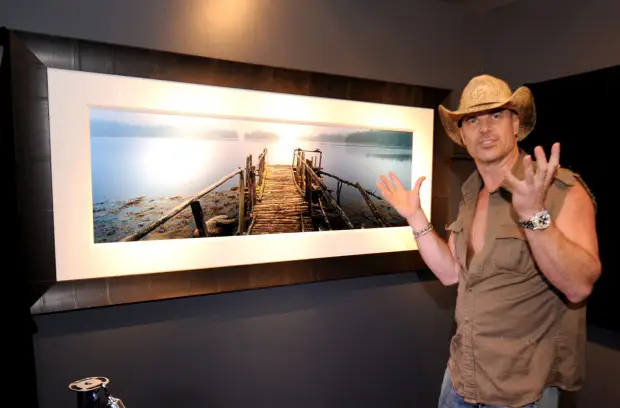
Peter Lik attends the opening of the Peter Lik Gallery on January 24, 2008 in La Jolla, California. Jeff Kravitz Peter Lik at this moment is the most successful fine art photographer if you measure success in sales. Peter sold close to half a billion-dollar worth of prints through his 15 art galleries scattered throughout major tourist locations of the USA. Most of Peter Lik's titles are sold as limited edition prints that are made in series of 995 copies and often some quantity, about 45, of the same under the "Artist Proof".
As the edition sells out the price for the prints comes up creating a sense of scarcity and urgency to pull the trigger on the purchase among the visitors of his galleries.
Let's briefly go back in time and see the moment Peter Lik took his first shot. Peter Lik originally from australis from Australia. Lik was born in Melbourne to Czech parents who moved to Australia after World War II. The story tells that Peter took his first step in photography around the age of 8 after his parents gave him a Kodak Brownie box camera just like the one below for his birthday.
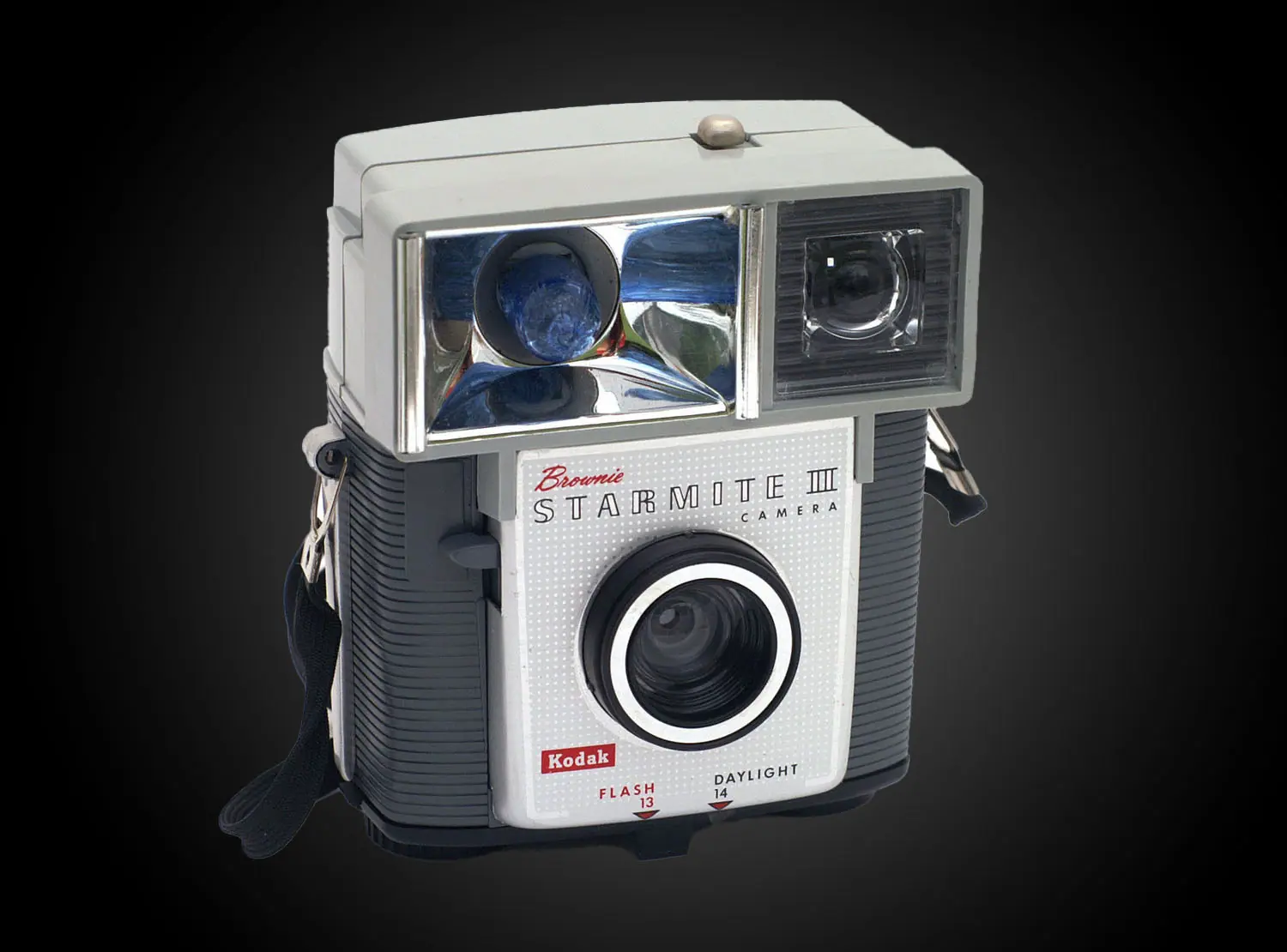
The camera had a fixed focus F/11 lens and was shooting on 127 roll film with a frame size of 1 5/8" x 1 5/8" inch square. Would be handy for modern Instagram bloggers ?
Interestingly this echoes the story of the most famous US landscape photographer � Ansel Adams. The small difference is that young Ansel got an earlier version of Kodak No 1 Brownie.
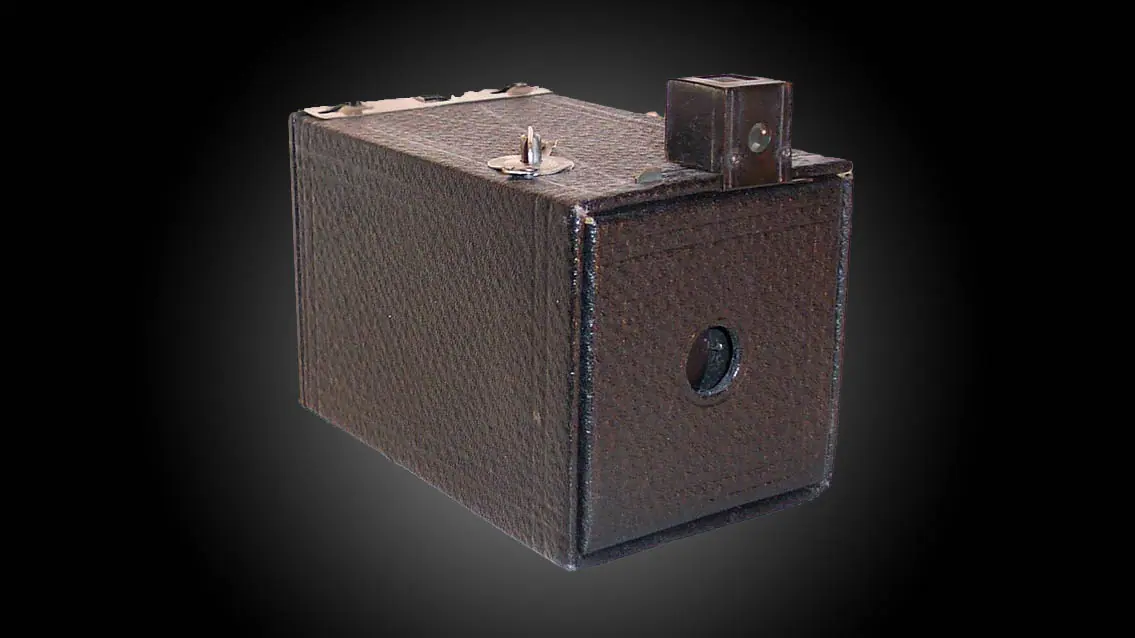
As a photographer, Lik is self-taught, learning mostly by trial and error. Unfortunately, there are not many of his photos available from his early days and the main body of what is known now is from his mature period. Peter opened his first gallery in 1997 in Cairns, Australia. He opened his first US gallery in Lahaina, Hawaii, in 2003, and his first in Las Vegas in Caesars Palace in 2005. After the initial success, Peter was opening new locations with admirable regularity and at this moment there are 13 galleries across the USA.
Peter Lik For Sale | Fine Art Gallery Locations
At the time of this writing, artist Peter Lik operates 13 fine art galleries across the US. Down from 15 a few years earlier.
Aspen, Colorado
Caesars, Las Vegas, Nevada
Chicago, Illinois
The Forum, Las Vegas, Nevada
Key West, Florida
Lahaina, Maui
La Jolla, California
Madison Avenue, New York, New York
Mandalay, Las Vegas, Nevada
Miami, Florida
Soho, New York, New York
The Venetian, Las Vegas, Nevada
Waikiki, Honolulu, Hawaii
Peter Lik Gallery
Typical Peter Lik Gallery is a well-established retail space in a high-traffic tourist location. Peter takes a great deal of attention to lighting. Due to the glossy nature of acrylic prints, glare is its number one enemy. So to show the prints in their best the controlled lighting is a must. Most of Peter Liks galleries are set up inside shopping malls or large hotels. The gallery interiors are decorated with natural materials to highlight the upscale shopping atmosphere. Usually, there is at least one dark room with a completely glare-free environment and dimmable lights. The room is used to demonstrate the color response of the prints to changing lighting environment and showcase them in the best possible light. While at the gallery one of the sales reps will likely approach you and ask what did you like the most. There is usually a limited-time offer that will expire very soon. A free photo book for example or the title will change pricing tier due to the series approaching another milestone number.
What Camera Does Peter Lik Use?
Not Kodak Brownie for sure. At least not for his commercial work. Lik is best known for his panoramic photographs captured with a Linhof 617 Technorama and using Fuji film. He is featured in several photographs with this monster in his arms. Peter is more of an athletic type but I doubt he enjoys carrying this monster around on long hikes.
Linhof 617 Technorama
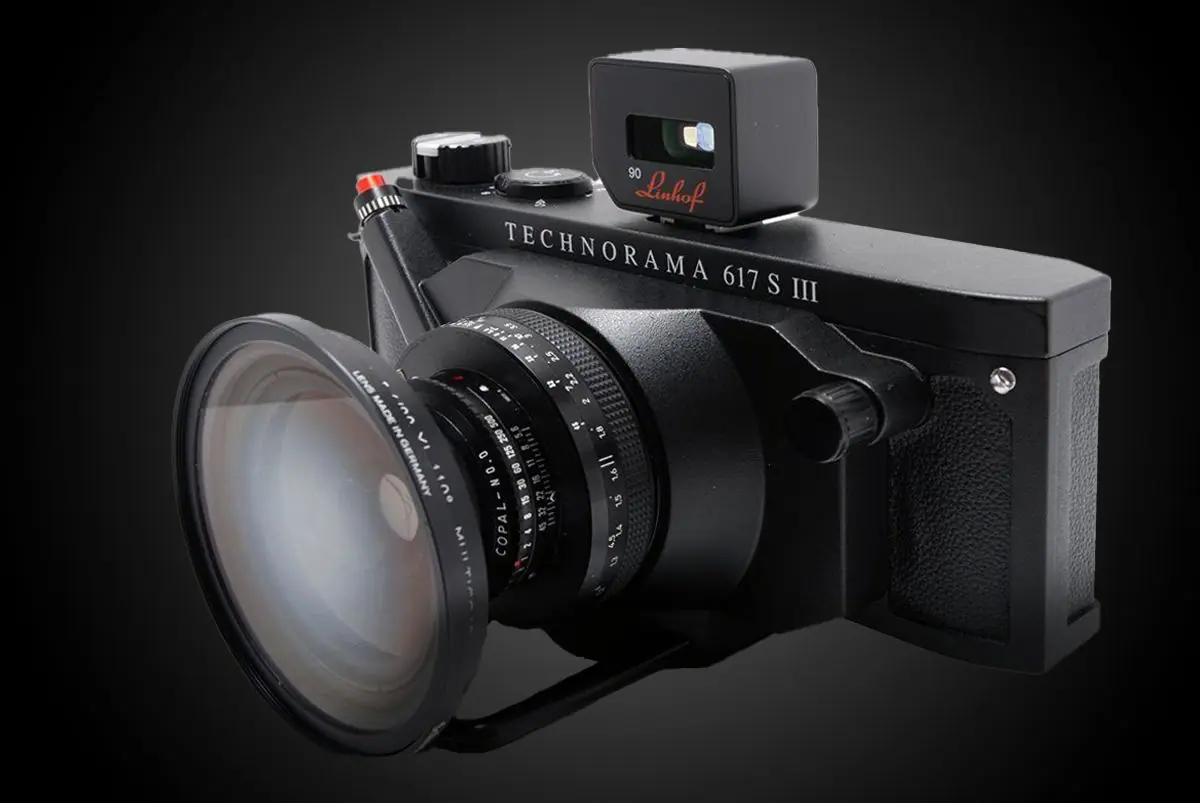
Linhof 617 is a panoramic 6 x 17cm frame size camera. It uses 120 and 220 roll films. Linhof has been making these since at least the 1970s and continues to make them today with some upgrades. The camera has no autofocus and no rangefinder and you will have to find a way to focus it accurately. 120 film offers plenty of resolution, however, with only four frames per roll you are always changing rolls.
Technorama is now available at around $7k new or around $5 to $6k used and it is clearly for enthusiasts. Although there may be a rare situation where this camera is preferable on technical merits to the latest full-frame DSLR panned three times for panoramic capture but I wouldn't bet at those odds.
Phase One
Another camera Peter Lik used is a Phase One. This brand is known for its modular XF medium format design.
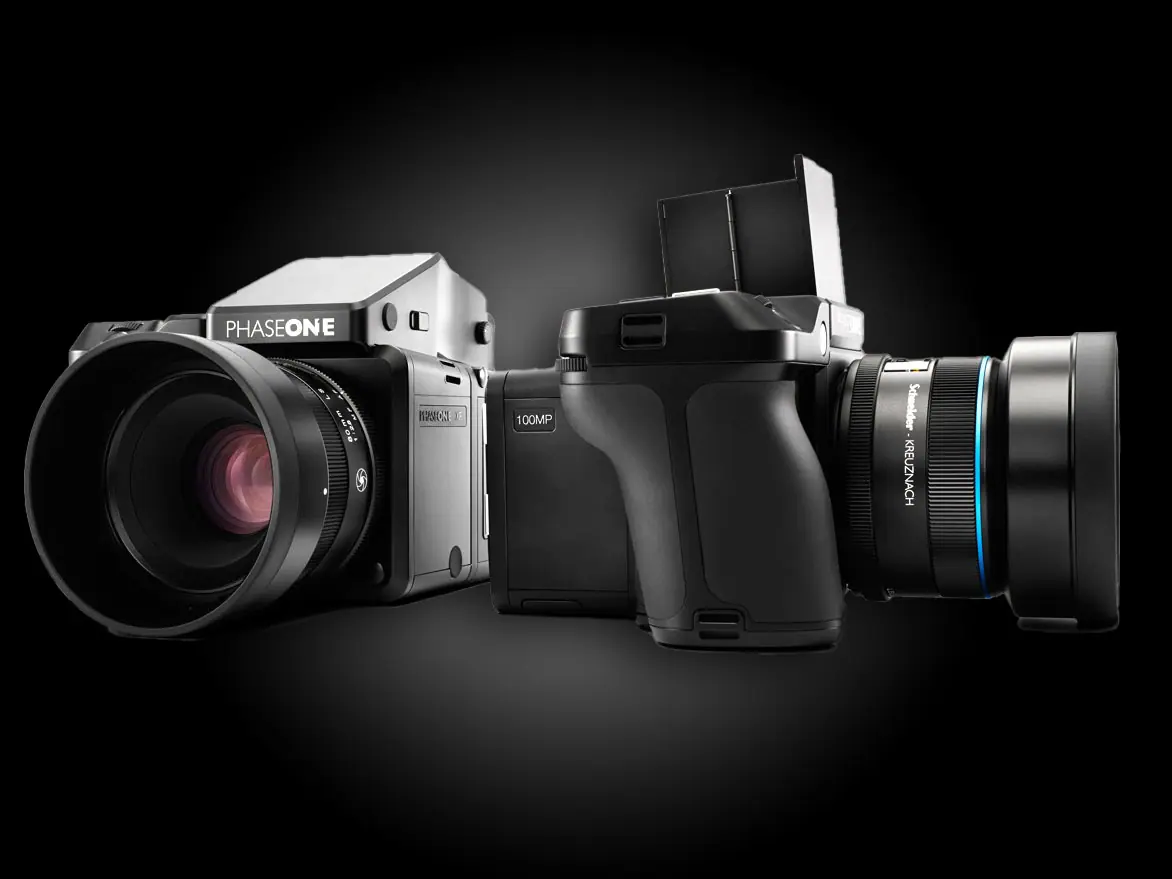
The idea behind this design is that you don�t have to replace the whole camera when technology advancement produces better image acquisition electronics. You just swap the backing like you would re-load the film on the analog cameras and you immediately will obtain upgraded capability. This beauty is not for everyone though. The current listed price of the latest Phase One 100MP camera with an 80 mm lens is 48,990 USD.
FujiFilm GFX100
The next one on the list is FujiFilm GFX100. This baby is a much more affordable alternative to 100MP Phase One. With the price tag of approximately $10k for a body, it comes closer to the professional full-frame systems but not quite there yet. Prepare to shell out another $3k for a lens and you�ll be ready to hit the road.

Nikon D850
And lastly, Peter Lik also used Nikon D850 and I�m sure his backpack was much lighter when he did. The 850 is a magnificent 46MP full-frame camera that is capable to produce amazing images with a very wide dynamic range. I personally forgot when was last time when I had to do bracketing using this camera. Even on the most contrasting scenes, it masters to capture the full range.
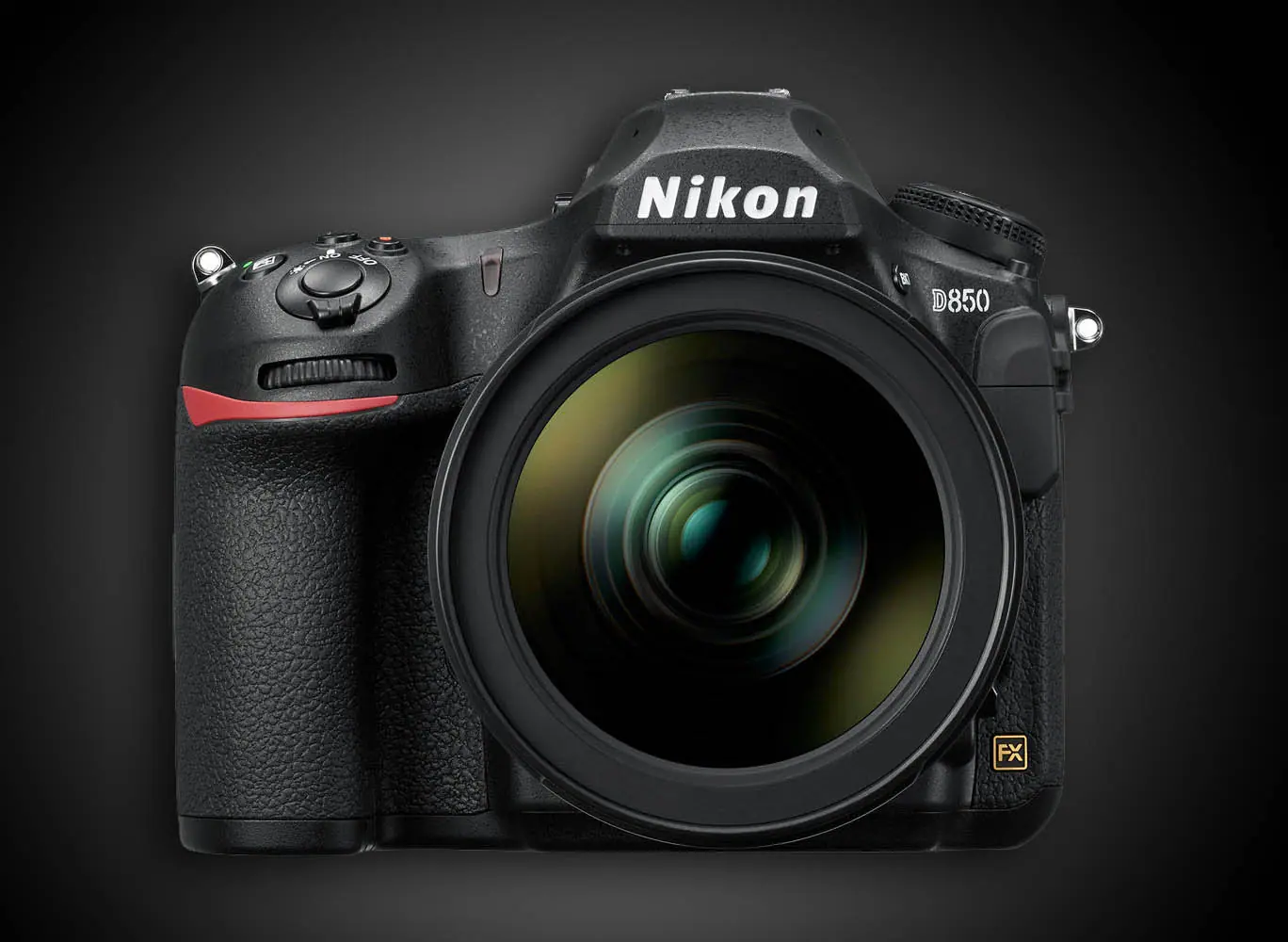
As an off-topic, I'd like to ask you. Which camera would you choose to do your landscape photography? Well, it's an eternal question. Medium format has its perks like an unbeatable resolution but lacks in other aspects such as prohibitive price and weight of the equipment. Medium format is amazing for certain types of work. Fast-changing scenes where trickery like panoramic stitching is not possible.
I would take it no questions asked to the locations where I don't have to be concerned about the depth of field. For example, shooting the canyon scenes standing on the rim without any front plan. Like the one below. The medium format would be unbeatable.
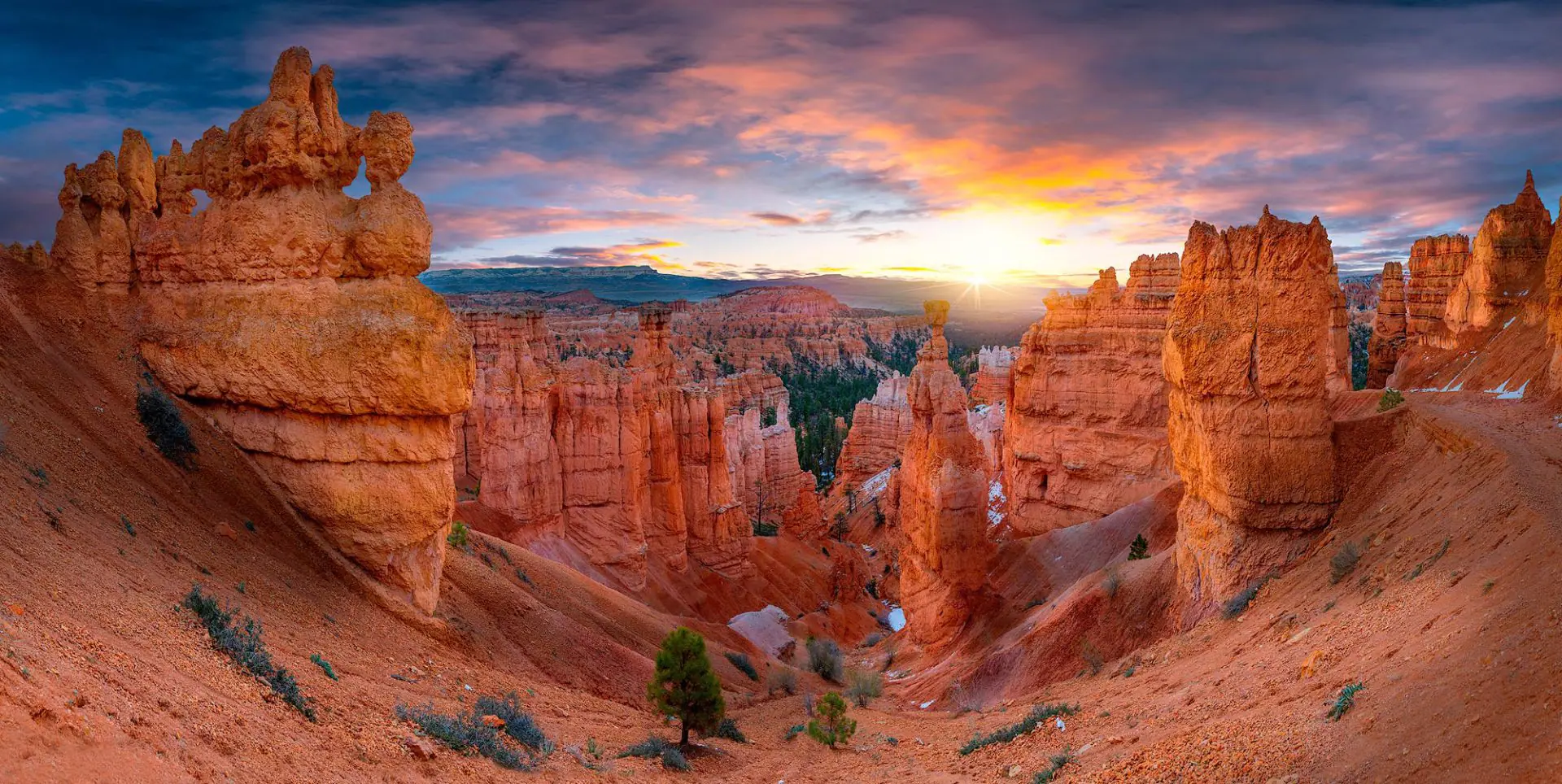
Guardians of the Sun by Alex Gubski
For a scene like the one below, however, I would choose the 35mm camera system. You have a more manageable depth of field and panoramic stitching doesn't represent a major problem.

Summer Dream by Alex Gubski
The reason is the optical properties of the large format cameras. In order to get the sharp image across the wide focal length, you will have to focus stack way more than you would with 35 mm. Even at the similar aperture and focal settings, the depth of field of large and medium format camera is going to be squeezed much more than on 35mm.
Anyway. Enough about the camera's specifics and back to Peter Lik.
Famous Work by Peter Lik
There is a number of landmark photographs of Peter Lik that often decorate the main feature walls at the storefront of his galleries. I wish I could post actual images here to illustrate but Lik USA is strictly against using their images on my website. Therefore, I will have to just list the titles and you feel free to Google them up.
1. Phantom - A photo made inside of Upper Antelope Canyon in Page, Arizona.
2. Tree Of Life - A photograph of a Japanese Maple tree located in the Japanese Garden of Portland, Oregon
3. Sacred Sunrise - A photograph of the sunrise bursting its rays under the Mesa Arch in Canyonlands National Park
4. Endless Summer - A seascape featuring the Scripps Pier in La Jolla, California.
5. Spirit Of the Universe - A lavender field under the Milky Way spanning above the sun-lit clouds shortly after the sunset. How did Peter manage to capture all of them together? Don't ask me.
6. Ghost - Another photograph of Antelope Canyon with a similar subject as the Phantom.
7. One - A photograph of autumn trees reflecting in the water.
What Paper Peter Lik Prints On?
Peter Lik mentions on his website that he mainly uses silver halide material for his Limited Edition images. FujiFlex Super-Gloss, this paper is a favorite of Peter Lik and many other photographers around the world. There is a very small number of shops that still use this technique and you may not find any in your city. To be honest with the advent of the pigment inkjet process there is very little sense in going out of one's way to print on a medium that will have to be chemically processed.
I did few tests myself and you can't really tell the difference between modern pigment ink metallic prints and silver halide by Fuji. Only at a very close range and looking at a sharp angle to the print's surface you can see the somewhat smoother surface of the FujiFlex. To get more information and comparative analysis of the two competing media please read my post on the subject.

Peter Lik Style
So, what do we mean when we say � Peter Lik Style? Lik's signature style that fascinates so many guests visiting his galleries and many photographers around the world is a spectacular presentation technique.
Firstly - all images are printed in large format.
Secondly - all images are face-mounted on acrylic.
Thirdly - if framed, the vast majority are set in wide linen-wrapped liners and expensive frames.
And finally, if it's a color print, it will sport a particularly high level of color saturation. Don't take me wrong. This is beautiful and in part that's what makes these prints play with the light the way they do. If you're interested in learning about prices on some of Peter Lik's images and their availability on the secondary market, please read my post on Lik's secondary market.
And that was in essence a simple recipe for the Peter Lik style. And not being able to offer you an actual photo of Peter Lik's piece I will post some of mine.
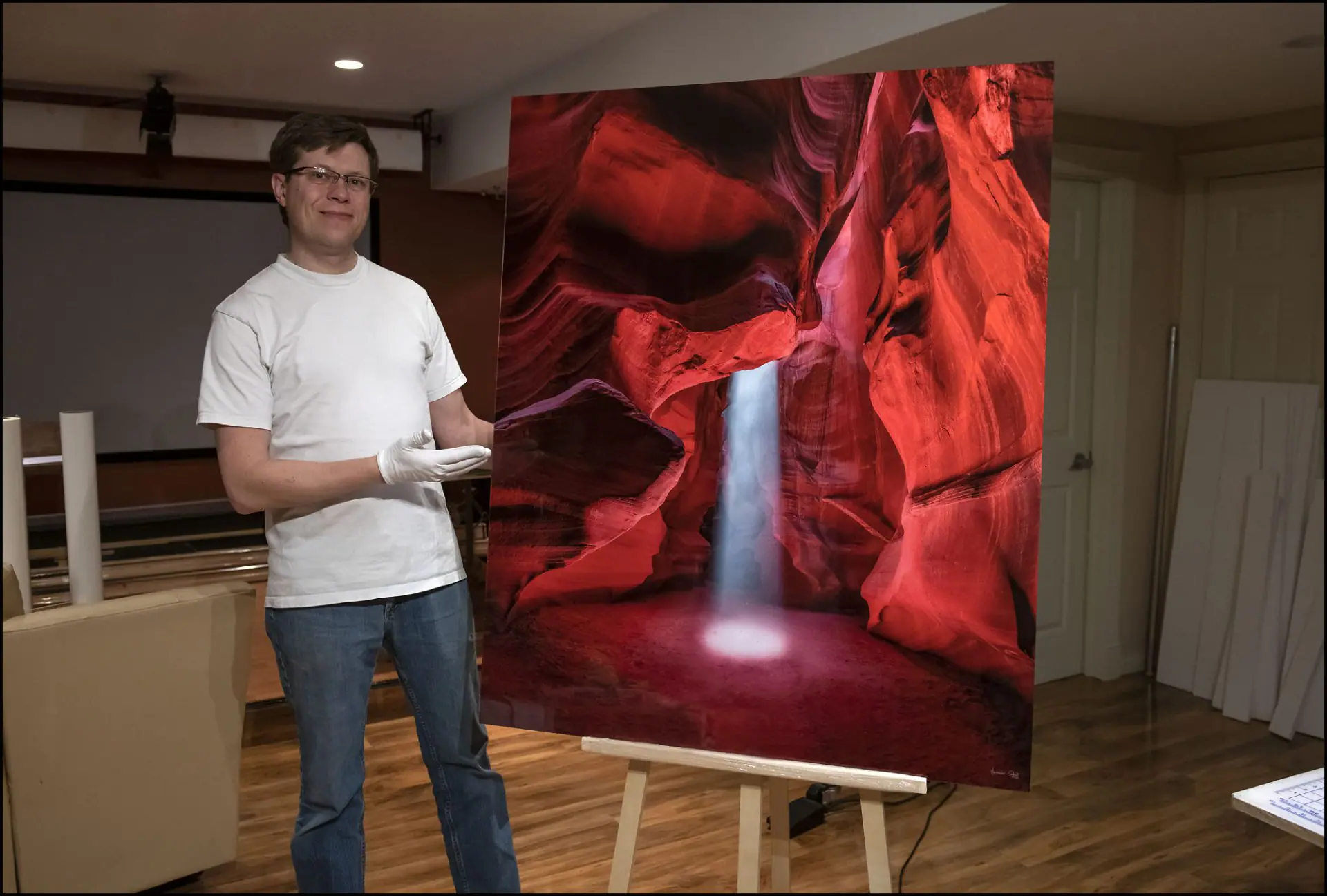

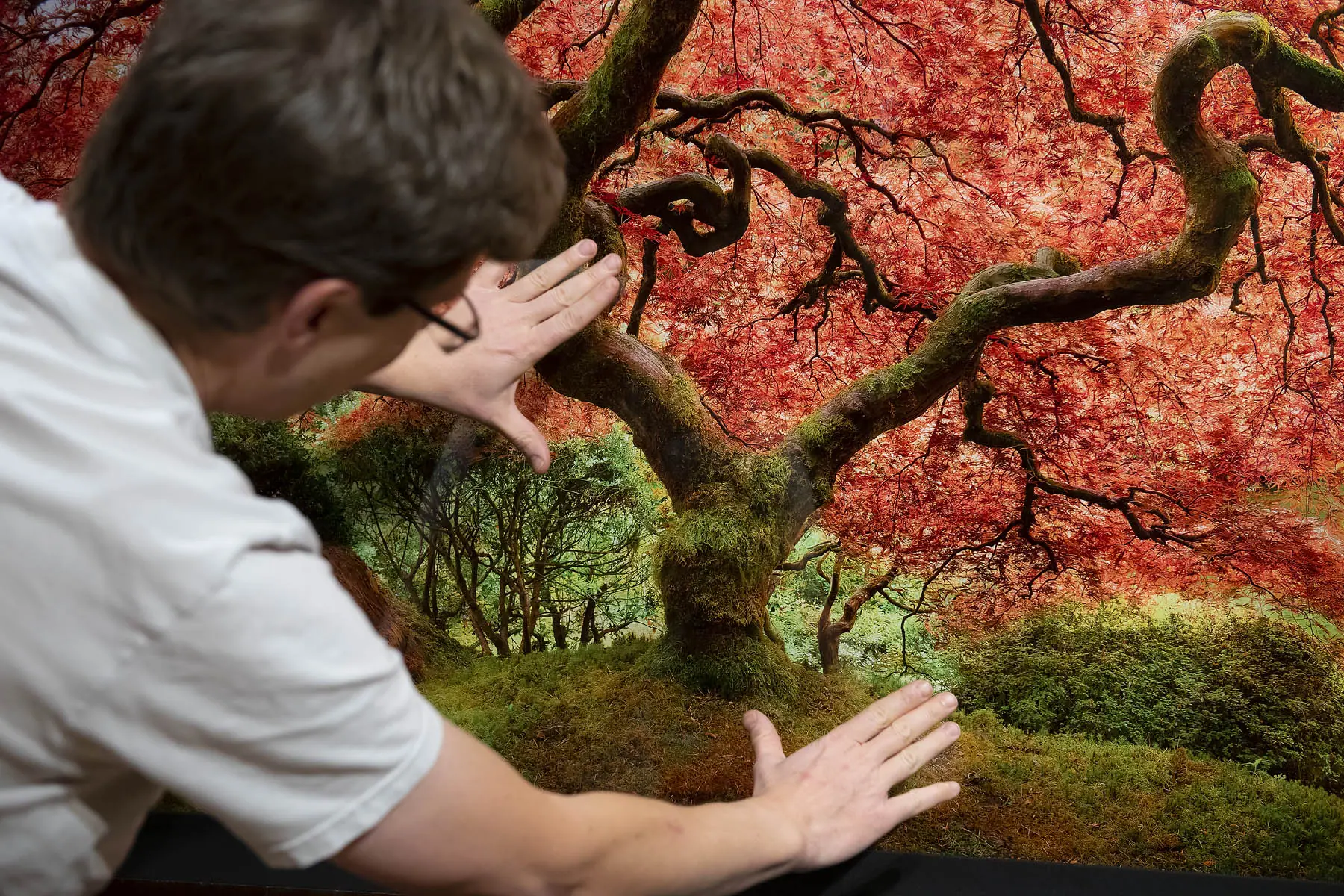
How Does My Work Compare to Peter Lik's
I follow the similar process as Peter Lik in finishing my prints. I use premium archival metallic paper for producing my artwork. I mount my photographs to the highest grade optical acrylic and encapsulate it with the rigid core backing for framed pieces or composite backing for frameless offset pieces.
Permanent bond to acrylic eliminates refraction, intensifies color and increases clarity.

Please check out the short video below to see the short overview of production process.

UltraChrome pigment technology guarantees image from fading for over 200 years and silver crystal museum quality paper provides the unprecedented color response.
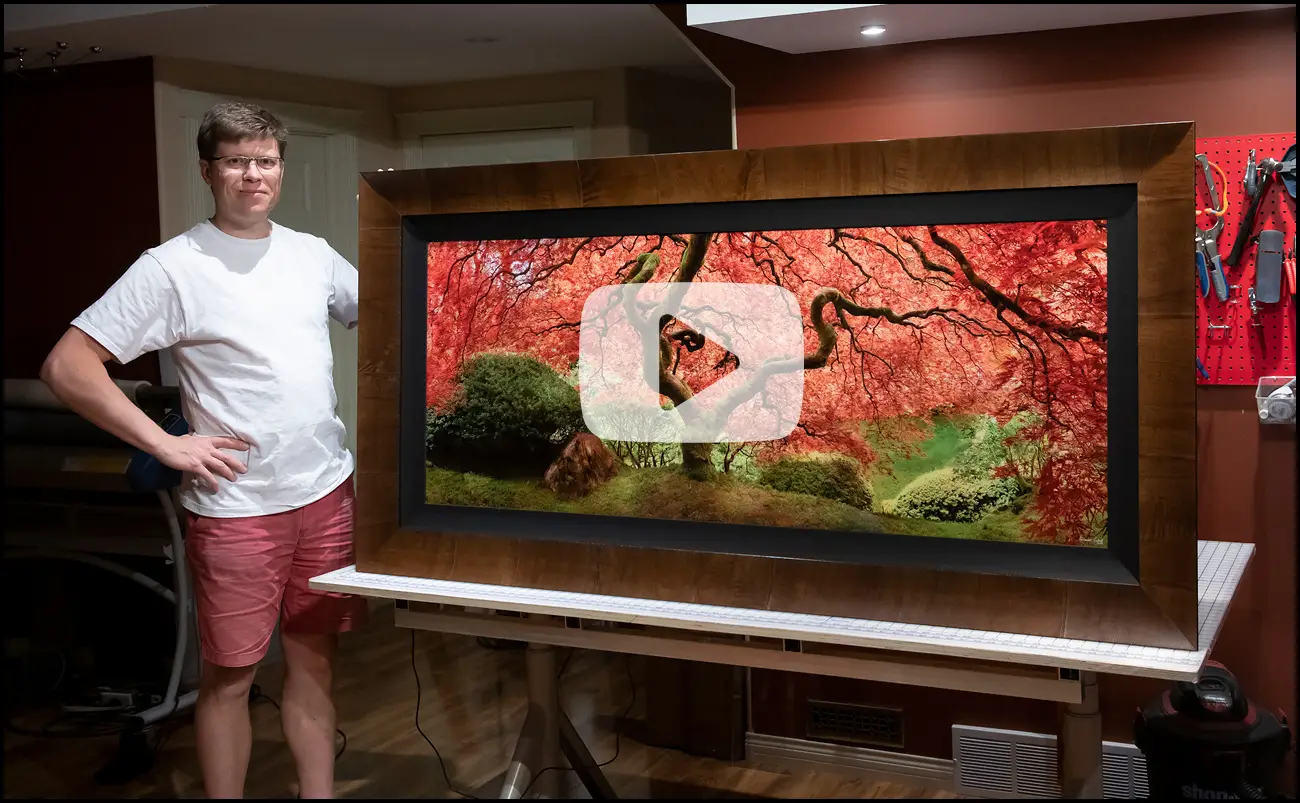
Images finished using this technique can be displayed frameless, but I do prefer framing them. Just as the Peter Lik's offer I do offer semless linen wrapped liners and selection of premul framing molding that would satisfy the most demanding tastes.

Luxury wooden frames bring focus to the image and being rich in texture and color are themselves a unique and testeful decor component.

Only top quality Italian made wood moldings are selected. I offer a range of the very best quality frame choices available.
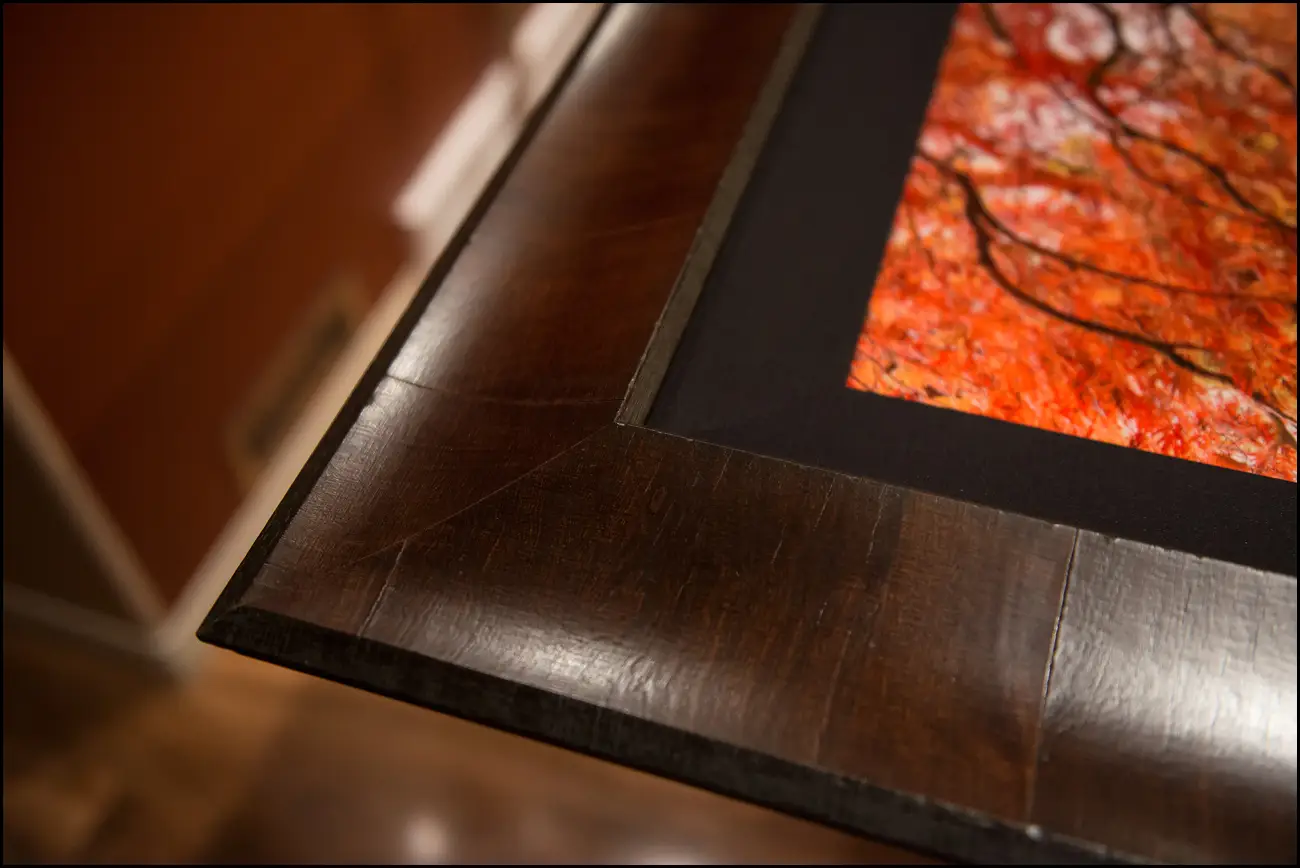
All tasks are done in my shop from start to finish. I'm assuring the best quality possible on every stage.
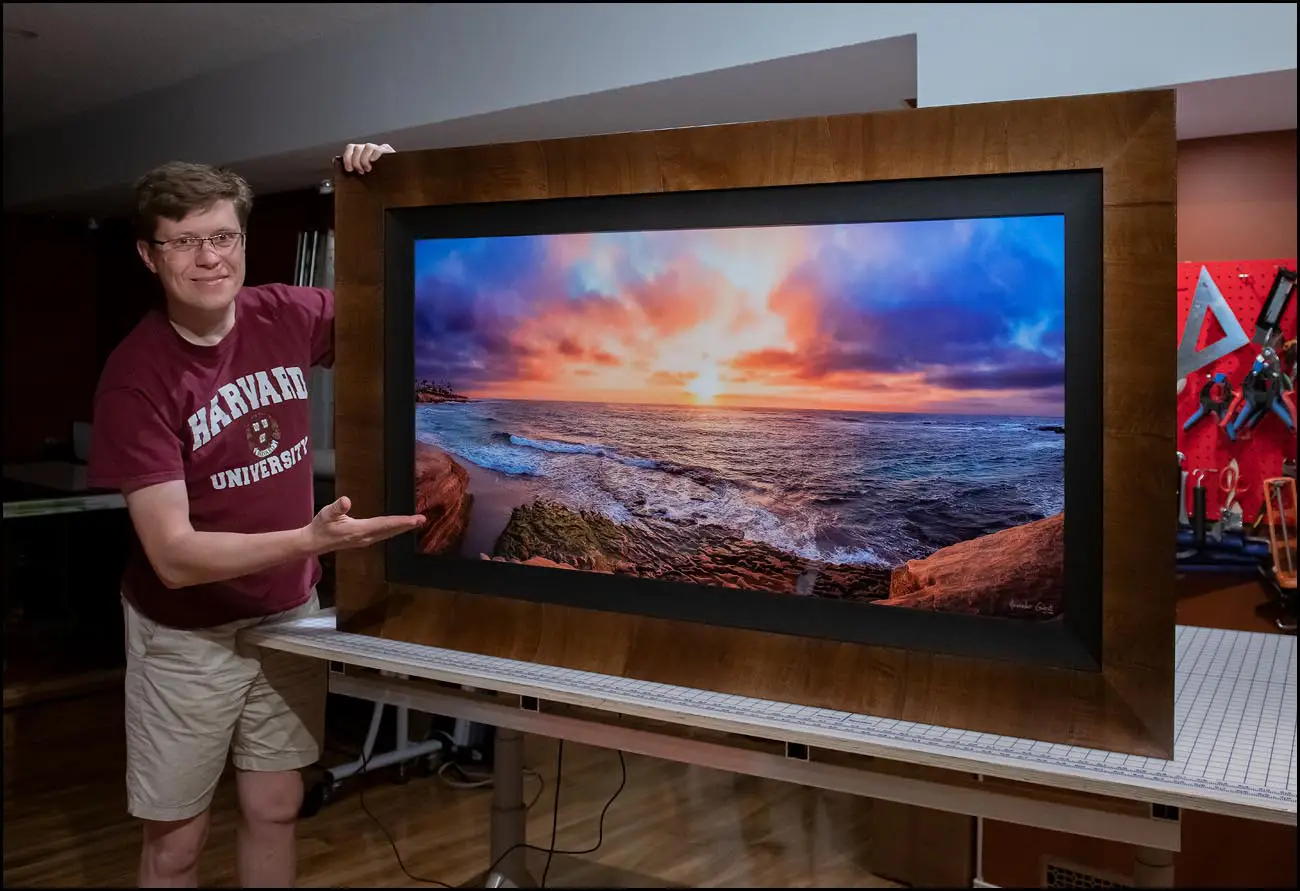
Finished pieces should satisfy my own criteria for look and quality of finish. Only the best pieces are offered for sale.
I would like to thank you for stopping by and if you're interested in purchasing one of my prints you can get familiar with pricing on my sales page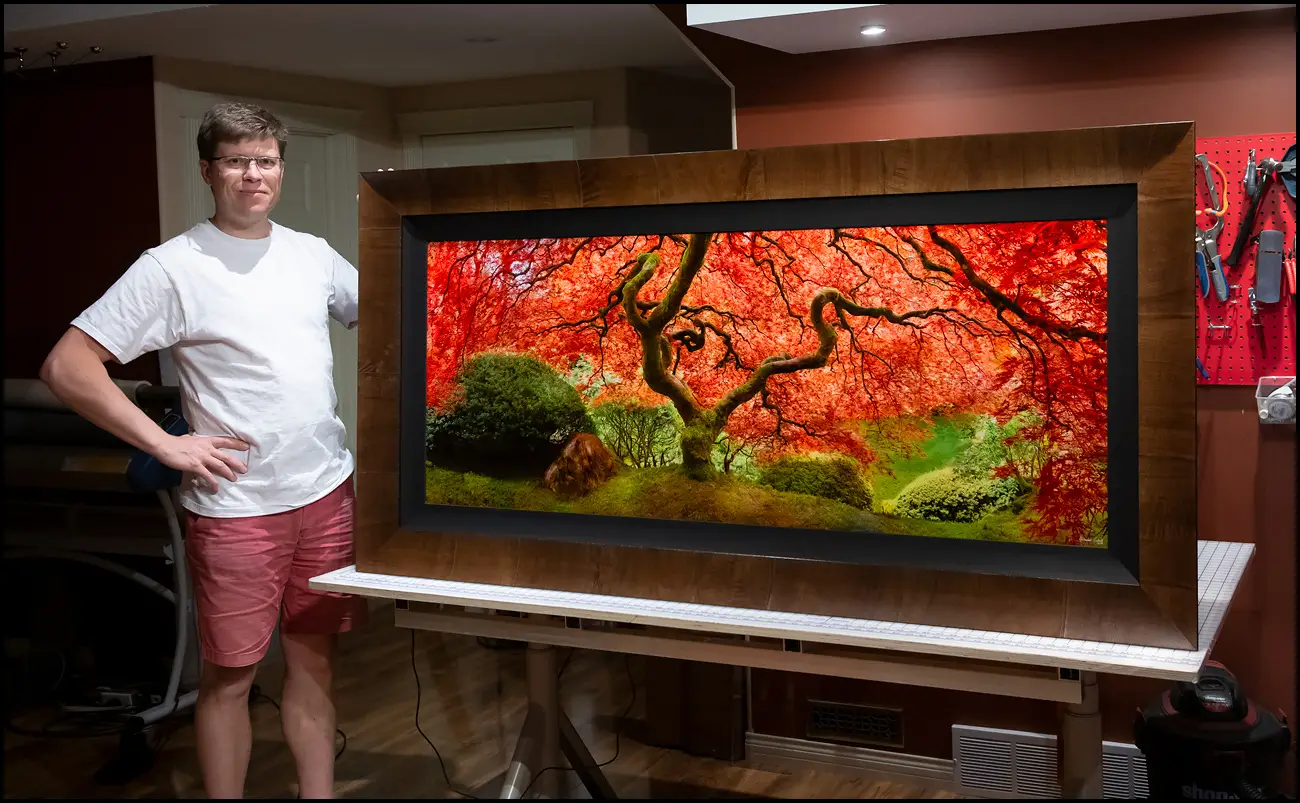
NON-AFFILIATION DISCLAIMER
Alexander Gubski Photography is an independent business. Alexander Gubski is not affiliated, associated, authorized, endorsed by, or in any way officially connected with the owners of respective brands mentioned on this website, or any of their subsidiaries or their affiliates. All brand names, as well as any related names, marks, emblems, and images, are registered trademarks of their respective owners. These trademark holders do not sponsor or endorse Alex Gubski Photography or any of its products or comments.
